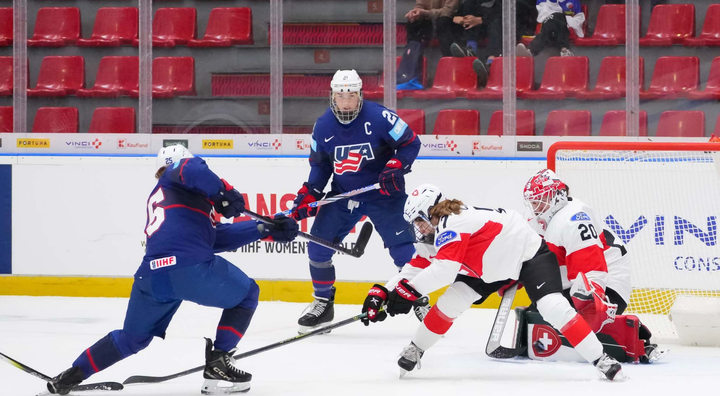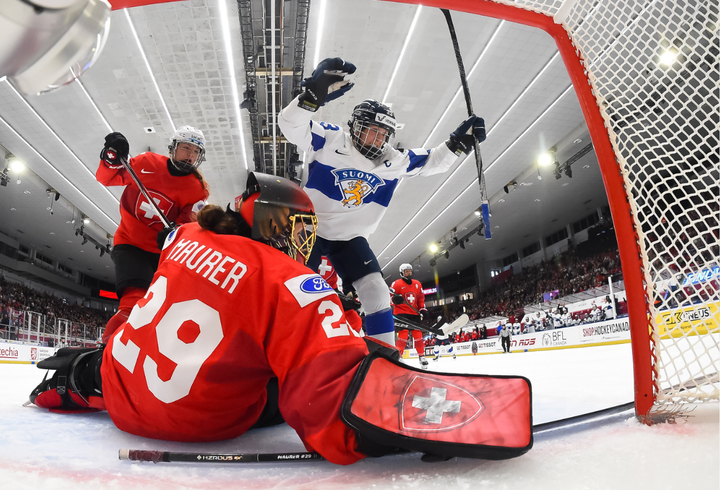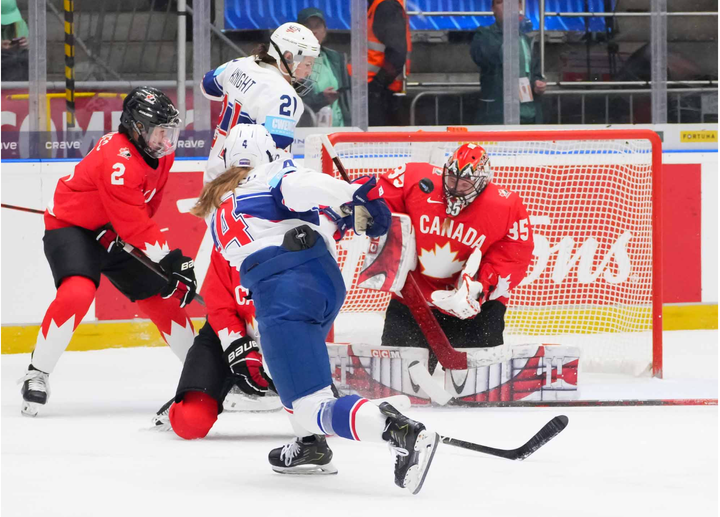After Losing Olympic Funding, Where Does Team Sweden Go From Here?
If this is rock bottom, how do the Damkronorna start to climb back up?
As the old saying goes, “Don’t cut off your nose to spite your face.” As of last Tuesday, it looks like no one told the Swedish Olympic Committee (SOK), when they announced the Damkronorna will no longer receive the SOK’s financial support.
On the surface, the decision may seem justifiable: the Damkronorna (“lady crowns,” as the team is affectionately known) consistently underperformed in international competition over the past few seasons. They failed to achieve the SOK’s 2018 Olympic bronze medal goal, finishing instead at a record-low seventh place in PyeongChang. Sweden’s IIHF ranking dropped to sixth in the world at the end of the season.
The SOK puts out an annual “Top And Talent” list of athletes who receive monthly tax-free stipends to assist with training and living expenses incurred by elite athletes. Fifteen members of the Damkronorna were each receiving 6,000 SEK per month (approximately $675 USD) for a total of 72,000 SEK a year - around $8,105 USD. That money is now gone.
When reached for comment, Swedish Ice Hockey Association (SIHA) Competition Direction Olof Östblom told The Ice Garden, ”From [the] SIHA’s point of view, the SOK decision makes the situation even harder for the girls who have been a part of the SOK program. [None] of the girls in the national team can make their living only playing hockey and the support from SOK has been important for many of them to be able to practice and prepare for hockey.”
So, how did it come to this, and are the players really the ones who should bear the burden?
A Preventable Mess
The revocation comes after the team’s listless and underwhelming Olympic performance in South Korea. To anyone who’s paid attention to Swedish women’s hockey over the past couple of seasons, the dismal end to their medal hopes was as predictable as it was depressing. Years under Leif Boork, a bad and unqualified coach with zero business in the elite women’s game, took a serious toll.
“None of the girls in the national team can make their living only playing hockey.”
Part of a coach’s job is to push, inspire, and bring out the best in players. Instead, Boork threw generational defender Emma Eliasson off the team and bullied and fat-shamed longtime Damkronorna captain Jenni Asserholt into resigning. The team won only four international games in the 2016-17 season - their worst record since 2002 - and finished sixth at the World Championships.
The only action the SIHA took during the 2017 offseason was to reiterate their faith in Boork and retain him as coach ahead of the Olympics.
And yet it is the Damkronorna players, not the SIHA, who will suffer.
Star forward Pernilla Winberg told The Ice Garden, “It will be hard to pay rent and buy food when we get back from camps and tournaments. Obviously it won’t be easy for any of the players that have work to be able to be away too many days during a season.”
All 23 players Boork selected to represent Sweden in South Korea played their 2017-18 club hockey in the Svenska Damhockeyligan (SDHL). The highest tier of women’s hockey in Sweden has homed elite players from all across the globe including Canada’s Jennifer Wakefield, Switzerland’s Florence Schelling, and American gold medalist Sidney Morin, to name a select few.
However, the issue of foreign players in the league has become a sticking point for some officials in Swedish hockey, including Boork and SIHA president Anders Larsson. Last summer, without warning, the SIHA stopped helping SDHL clubs pay the international transfer fees for import players. It did nothing to reduce the number of foreign players in the league; rather it added to the clubs’ budgetary strains.
Related
Swedish Ice Hockey Association abruptly cuts subsidies for foreign players in SDHL
Now, SOK CEO Peter Reinebo adds his voice to that chorus.
“If I look ahead I can see that some of these clubs can push forward harder if they really mean business with women’s hockey,” Reinebo stated. “They need to push for both coaches and players, and might have to stop signing expensive international players...It’s a choice they make. It’s not our choice.”
Damkronorna players reject the idea. Forward Erica Udén Johnansson told The Ice Garden,
“I think it increases the status of our league and I think it helps set the standard for where we should be in Swedish hockey. Of course it makes it harder to compete for spots, but then maybe we can do that little extra and become better individuals that eventually will become a better national team.”
Club team coaches immediately pushed back against the notion that foreigners impact the Damkronorna’s play, including Fredrik Glader, head coach of 2018 SDHL champions Luleå Hockey/MSSK:
“That results in [the] national team the last four years has nothing to do with SDHL teams. Every player in Damkronorna has big spots in the club teams. No one has been outside because of foreigners.”
Glader continued, “Go to our team: [Damkronorna] Fällman, Stenberg, and Nordin. They play 5-5, power play, boxplay, and 3-5...and they can practice with and against [for] example Hiirikoski, Karvinen, Wakefield, Mikkelson, and other good players.”
Leif Boork’s tenure concluded after PyeongChang, but the damage is done and the disease isn’t cured by shedding one bad element. More than one source close to both the SDHL and the Damkronorna questioned how much of the SOK’s decision was motivated by the desire to protect just how much money they invested in Leif Boork despite his dismal returns - and how much he walked away with after his contract ended.
The resistance and complaints about non-Swedish players show an alarming level of disconnect between what happens in board rooms and what happens at the women’s club hockey level: there are simply not enough Swedish players to fill the rosters, nor is there a junior development system in place for girls to grow their game and make their way to the SDHL.
Starting Over
Boork’s successor Ylva Martinsen faces an uphill battle. Elite Swedish players have long been asked to make sacrifices, and losing a significant chunk of their income will only make it harder for them to balance making a living with the demands of their sport. Demanding results through punitive measures that actively impede progress is counterproductive, callous, and unrealistic.
At the time of publication, three Damkronorna players - Annie Svedin, Johanna Olofsson, and Maria Lindh - have retired from hockey this offseason. All three are 26 years old or younger.
Martinsen, herself an alumna of both the Damkronorna and the SDHL as well as the former U18 Head Coach, vowed to carry on: “It’s very sad in the short term, but it doesn’t affect the seasonal planning.”
It’s clear from both the headlines and the score sheets that something has to give, but that something shouldn’t come at the expense of the players. Further straining their work-life-hockey balance won’t lead to better results; instead it will lead to more disenfranchisement and more early retirements. For now, the Damkronorna will continue the fight, because there is no other choice.
As Pernilla Winberg said, “The reason we fight to get better resources is because we believe we can get good results if it gets better.”
All they need is the chance to prove it. A chance that the SOK’s funding decision has delayed.
Thanks to Patrik Bexell & Erik Gustafsson for their translation help.





Comments ()